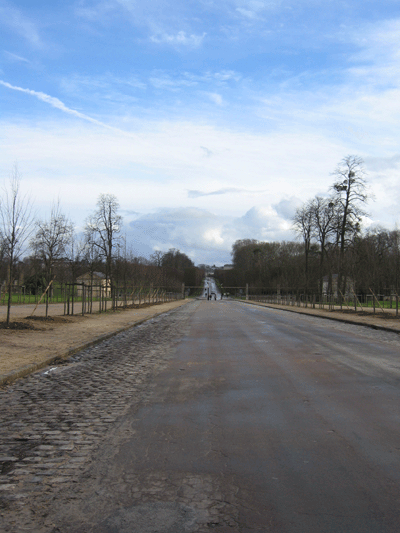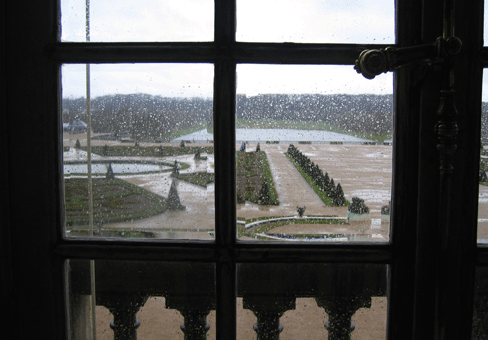
Although it rained on our trip to Versailles, our experience at the seventeenth
century castle was not any less memorable. The impressive Chateau,
with its gold, marble, glass ornaments and sprawling gardens, looked like
it belonged to a fairy tale. We started our tour with the main castle, before
progressing to the gardens and then the Trianon, a "smaller" palace on the
grounds of Versailles.
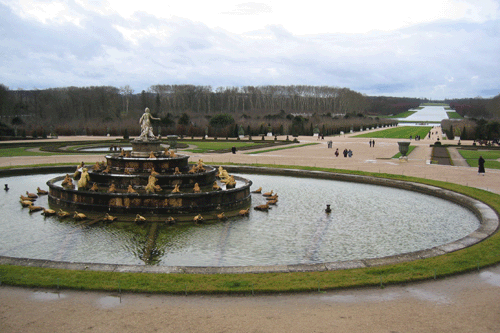
The palace of Versailles was initially constructed under Louis XIII in 1623
to serve as a hunting lodge to the King and its court of gentlemen and was
only a small building of wood and brick. However, Louis XIII liked it so
much that he had it expanded. Eventually, under the reigns of Louis XIV and
XV, Versailles would be built upon and turned into a grandiose Chateau and,
in May 6, 1682, would become the official residence of the Court of France.
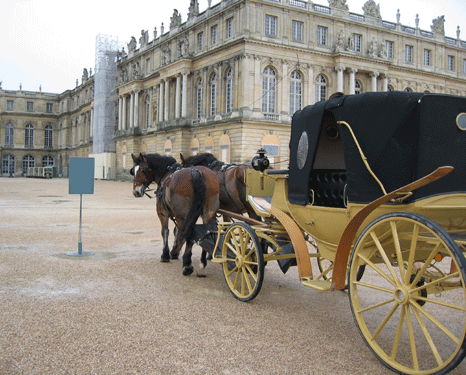
The palace itself symbolizes the power of the Sun King, who reigns
between God and Earth. Everything in the décor and furnishings of
the palace is reminiscent of an omnipotent "Sun King".
We were all very impressed by the King and Queen's chambers. Walls, ceilings
and furnishings are all handcrafted in rich silks, velvets, and extensive
amounts of gold and marble. The damasks in the King's apartment bear the
Sun King's logo, whereas those in the Queen's are of a more flowery
nature. Since all the work was handmade, it took decades to complete these
rooms, and almost as long to recreate them after the Revolution.
Hall of Mirrors
One of the most memorable moments at the palace was our visit to the Hall
of Mirrors. By far one of the most famous rooms of the castle, the
Hall is an enormous room some 73 (241 ft) meters long and 12.3 (40.6
ft) meters high, an entire wall of which is covered in mirrors symmetrically
matched on the opposite wall by windows opening on the gardens.
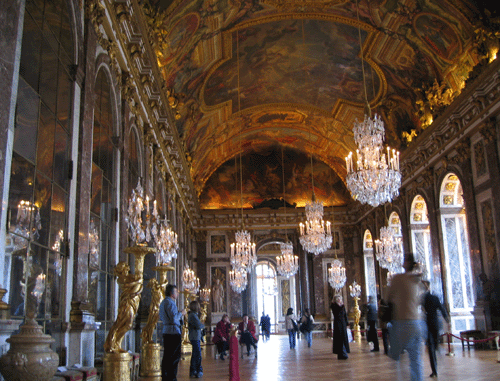
In the afternoon, the reflection of the sun on the mirrors powerfully
lights up the room, and symbolizes the light shone by the Sun King on
France. Unfortunately, we were told that the museum is closed at the time
when the sun hits the mirrors directly and the reflection is most spectacular
(it occurs after 6pm). The ceilings of the Hall of Mirrors are lined
with representative paintings, and imported marble statues adorn each side
of the walkway. The famous Treaty of Versailles would later be signed in
the Hall of Mirrors.
The Chapel
We were granted privileged access to the Royal Chapel, where, following a
rigid schedule, the Kings Louis XIII, XIV and XV attended mass every day.
The foundations and ornaments of the Chapel and its high ceilings are all
representative of the King as a medium between God and man. Again, marble
pillars and ornate figures decorate the Chapel and the altar shines blindingly
in gold and brass trimmings.
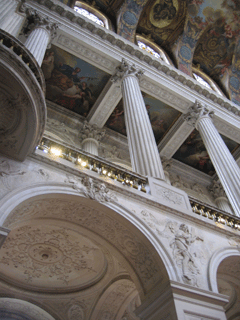
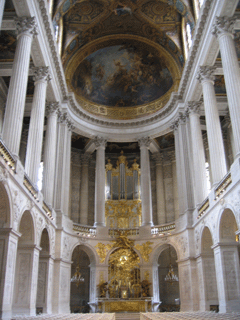
After walking around the Chapel, taking pictures like classic tourists and
unable to keep ourselves from feeling slightly V.I.P (as we were the only
ones allowed on the premises), we were led to the famous Opera.
The Opera
The Opera, designed to seat some 712 people, was build under Louis XV and
made entirely of wood. The majestic room was lit by hundreds of candles at
the time of its use (apparently 10,000 candles were consumed throughout a
single performance, some of which lasted more than six hours). Wood panels
simulating marble line the walls, and the accoustics of the room are said
to be perfect. The curtain on stage is ornamented with an embroidery of the
Royal logo made of 40 kg (88lbs) of gold and measuring an impressive 5 feet
in diameter.
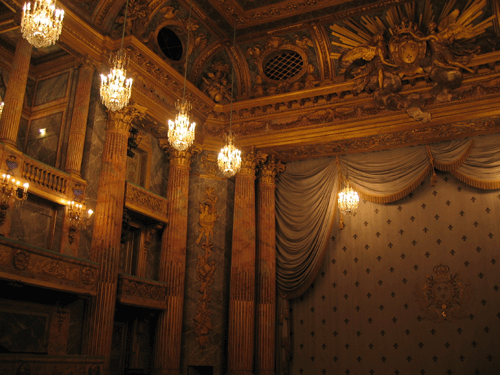
The Trianon
After a quick lunch at a charming restaurant in the gardens of the palace,
we met with our guide for a visit of the Trianon. The Petit Trianon was a
gift to Marie Antoinette by Louis XVI upon his ascent to the throne. The
petit Trianon is decorated in light greens, and the wall moldings were delicate
flower ornaments, all representative of the power of the king, but this time
represented by flowers and plants, symbolic of summer and gardens.
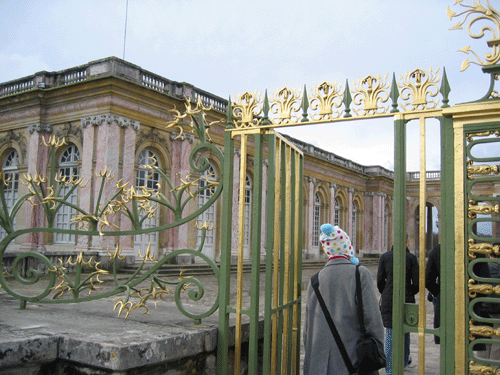
We were all curious, of course, to find out if the myth that Marie Antoinette
had said "Let them eat cake" to the starving of France was actually a fact.
Apparently, this is false, and there are no records of any such a statement.
In fact, according to our tour guide, Marie-Antoinette became in power at
a very young age and was more ignorant and immature than was really arrogant.
